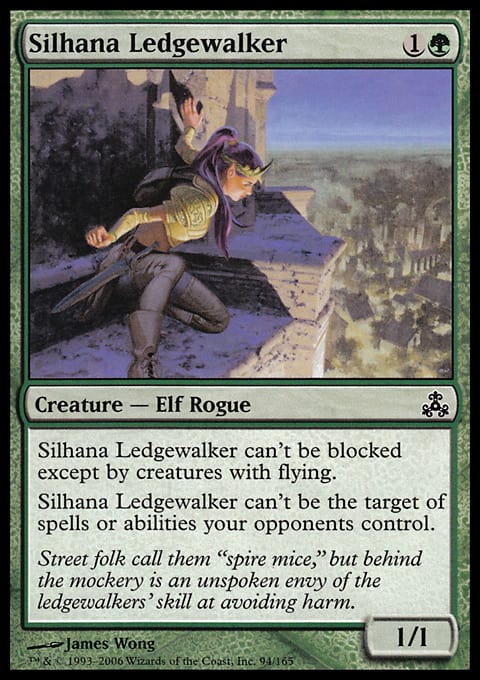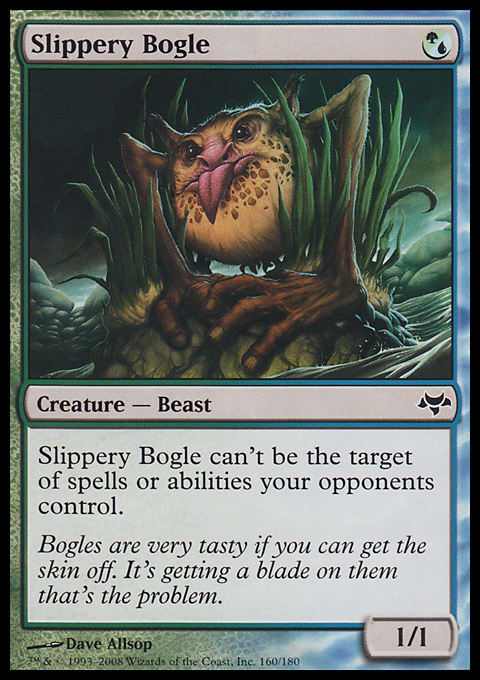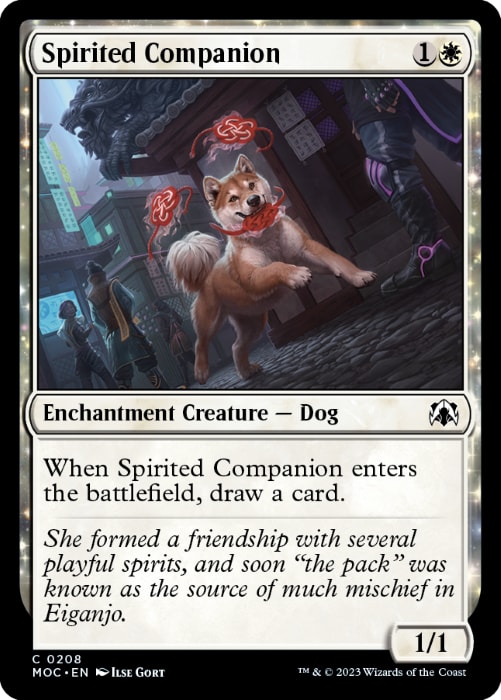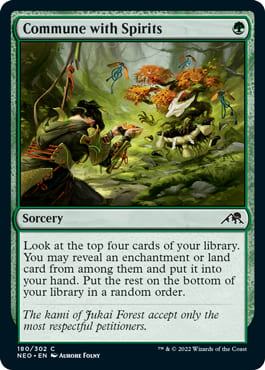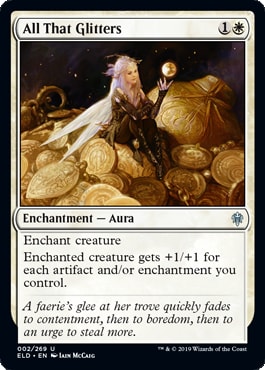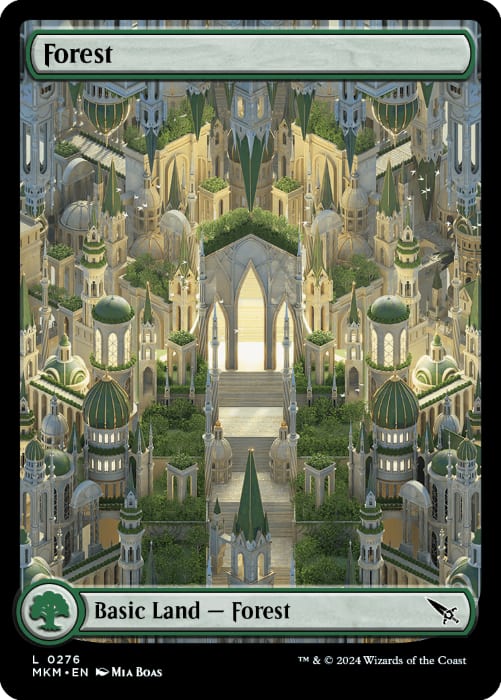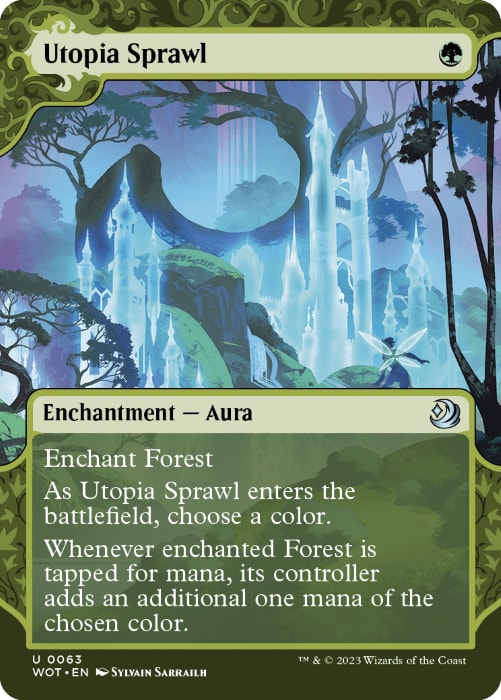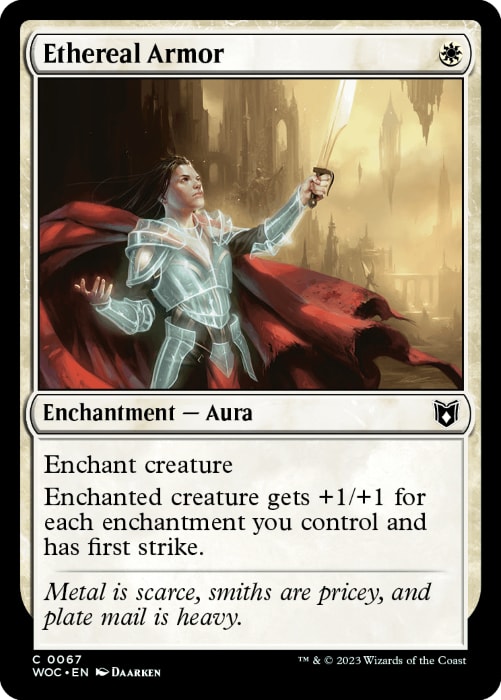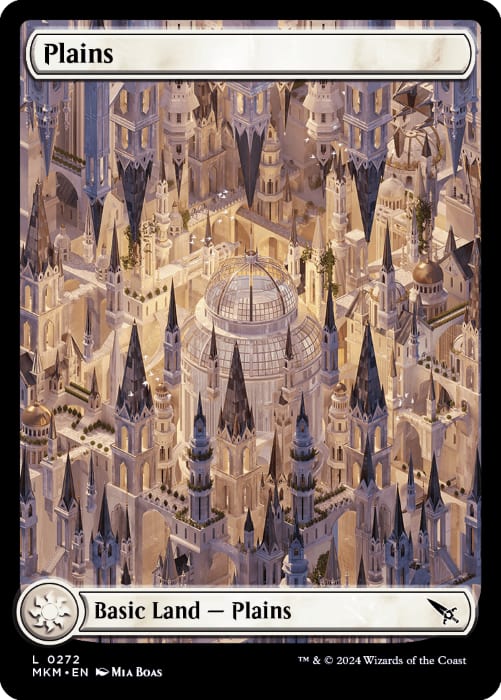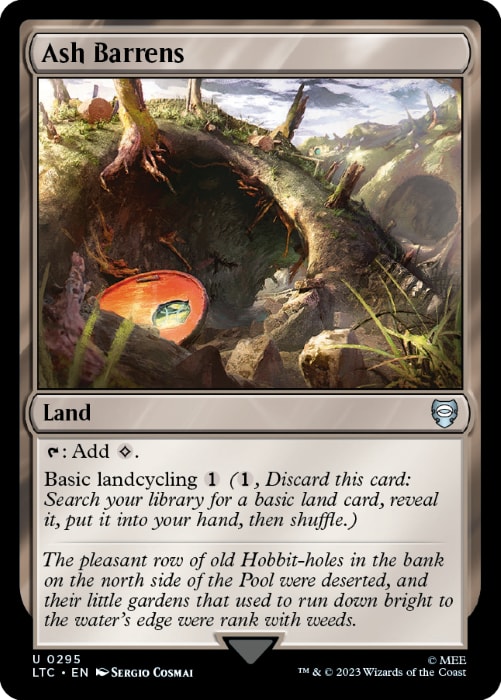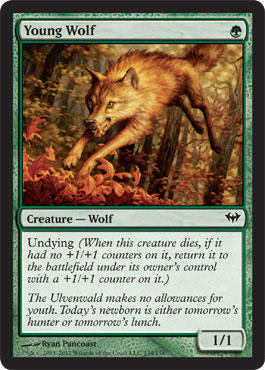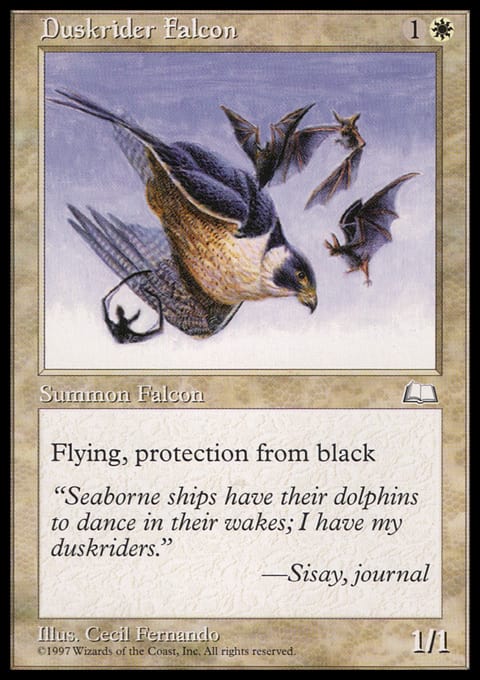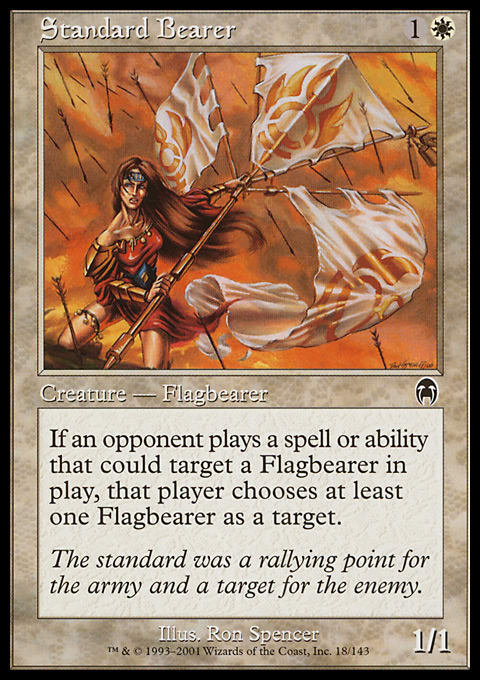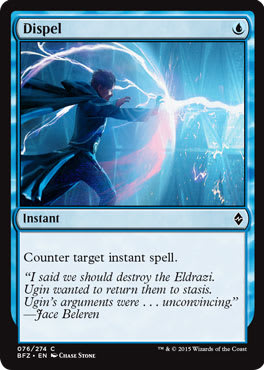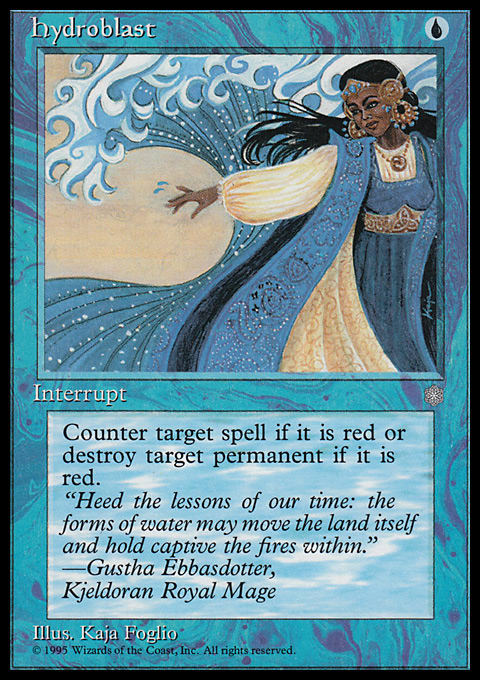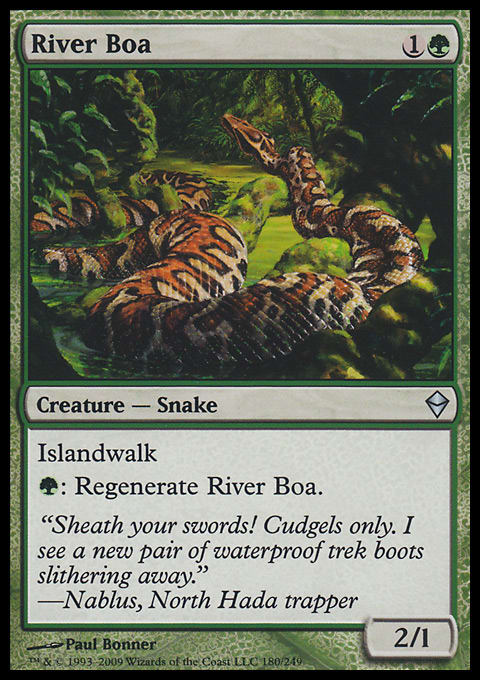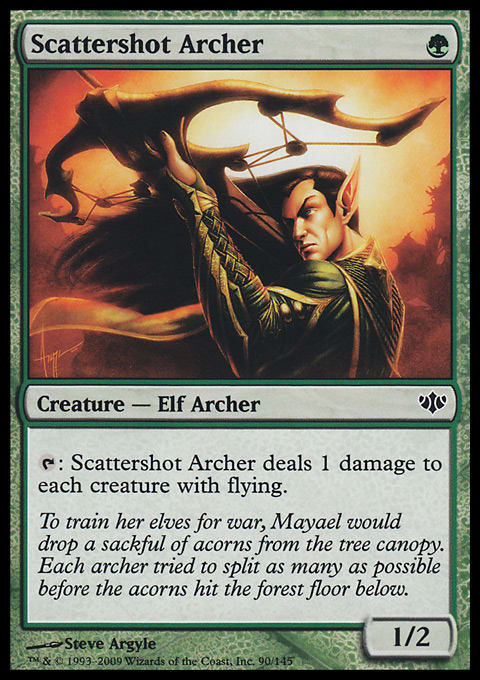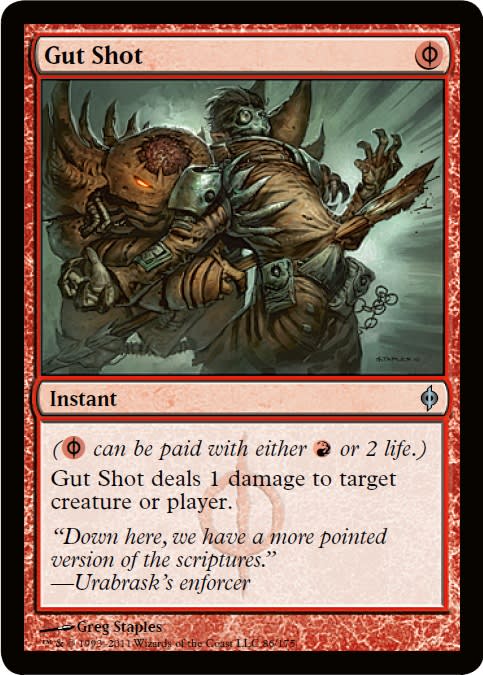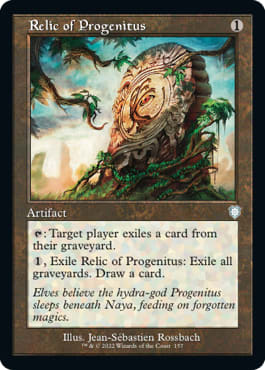Over the last couple of months, I've realized that while I still write a decent amount on Pauper, it's been a long time since I talked about certain decks. The idea was that I'd already written and talked about those decks in the past and in a lot of ways, the information is pretty relevant still to this day. To a point that's true. A lot of archetypes that I talked about five years ago are still around today and in some cases, while they have changed, in many ways they're still the same. However, it has been several years and either the decks have changed enough to warrant covering them again, or else the meta around them has shifted such that it's worth discussing how to use them better today.
Over the next several months I plan on writing about a variety of different Pauper decks where time allows. I might go back and re-examine previous articles or just talk about new decks entirely. In some cases, this will be little more than a solid deck tech to help players understand what a deck does and in others, it's going to be a more nuanced look at the deck. Today is going to be the latter. I'm going to be talking about one of my personal favorite Pauper decks: Bogles.
In recent years my true favorite deck - Elves - has fallen largely out of favor, thanks to the increase in quality board wipes. Because of this, I struggled a bit to find something else I liked to play. I historically also enjoyed the likes of Boros Monarch, Slivers, Affinity, Mono-Black Devotion, and even Flicker Tron - but each of these seemed to either go in and out of being playable or else had been banned out, making it difficult to play again. Thankfully, Bogles was fairly unaffected and seeing as how it was my go-to secondary list after Boros, it was an easy one to pick up in recent months and a great one to talk about here.
It's actually a fairly simple deck. You take some hexproof creatures, suit them up with auras, and attack. This might be frustrating for opponents playing against it, but when you're in the driver's seat, it's great for players of all experience levels. For newer players, it's great because of its simplicity of play. For experienced players, there's a lot to enjoy in the nuances of subtle plays and finding optimal ways of sequencing to navigate tough games.
As it happens, we're largely going to talk about the second aspect of that - focusing on card choices, deck-building, and ways to play the deck rather than talking about the deck itself. The reason for this is that, frankly, the deck hasn't changed all that much over the years. For example, let me show you the list from the first Pauper Bogles article I wrote back in 2018.
Bogles | Pauper | PR0boszcz, Competitive League 11/28/2018
- Creatures (14)
- 2 Heliod's Pilgrim
- 4 Gladecover Scout
- 4 Silhana Ledgewalker
- 4 Slippery Bogle
- Enchantments (28)
- 1 Cartouche of Strength
- 3 Cartouche of Solidarity
- 4 Abundant Growth
- 4 Ancestral Mask
- 4 Armadillo Cloak
- 4 Ethereal Armor
- 4 Rancor
- 4 Utopia Sprawl
- Lands (18)
- 1 Plains
- 12 Forest
- 1 Ash Barrens
- 4 Blossoming Sands
- Sideboard (15)
- 2 Fling
- 2 Lifelink
- 2 Natural State
- 2 Spell Pierce
- 2 Standard Bearer
- 2 Young Wolf
- 3 Gut Shot
Now, let's look at another list from the past couple of weeks.
Bogles | Pauper | AoFTW, MTGO Pauper League 5-0
- Creatures (11)
- 3 Silhana Ledgewalker
- 4 Gladecover Scout
- 4 Slippery Bogle
- Sorceries (4)
- 4 Commune with Spirits
- Enchantments (28)
- 1 Unbridled Growth
- 2 All That Glitters
- 2 Cartouche of Solidarity
- 3 Ancestral Mask
- 4 Abundant Growth
- 4 Armadillo Cloak
- 4 Ethereal Armor
- 4 Rancor
- 4 Utopia Sprawl
- Lands (17)
- 3 Plains
- 12 Forest
- 2 Ash Barrens
- Sideboard (15)
- 2 Scattershot Archer
- 2 Standard Bearer
- 2 Vitality Charm
- 3 Duskrider Falcon
- 3 Freewind Falcon
- 3 River Boa
It's not that hard to see just how similar the core of the deck is from then to now. In fact, barring a couple of flex slots and a certain new card, it's practically identical. Even those aforementioned flex slots are fairly in line with cards that have been used for years, with things like Heliod's Pilgrim, Cartouche of Strength, and Unbridled Growth coming and going from lists. Frankly, the lists at their core are so similar that rather than a traditional deck tech and review, this article should be treated as a companion piece to the original article listed above.
So, now that we've noted how similar things are from then to now, let's get into the meat of the deck discussion, starting with...
The New Cards of Pauper Bogles
Kamigawa: Neon Dynasty brought with it a lot of new Enchantment-centric cards, and a few managed to trickle through to Pauper. The two most notable were Spirited Companion and Commune with Spirits. I'd argue that Commune was the most impactful, as it allowed you to find what you needed in regards to enchantments and lands, though it wouldn't help you on the creature front like Commune with the Gods. Still, at one mana, that was enough, and in some builds you could still find copies of Spirited Companion alongside it. The good pupper allows you to draw deeper in your deck, synergizes with Ethereal Armor and Ancestral Mask, and acted as extra edict fodder, though it also turned on opponents' removal as well.
The real kick in the pants came off the back of the addition of All That Glitters in Commander Masters. The instant the card was previewed, everyone knew it would show up in Bogles without hesitation. After all, there was tons of precedent in various Bogles or Bogles-like strategies in both Pioneer and Modern, so it would be a no-brainer here. After all, it's sort of like an extra - though more expensive - Ethereal Armor or perhaps a cheaper - yet weaker - Ancestral Mask. Frequently it seems the latter, as copies of Ancestral Mask are often shaved for some number of All That Glitters.
While less impactful than those three cards, I'd be remiss if I didn't also mention the downshift of Spirit Link in Dominaria Remastered. In general, there's not much to it, and in fact we'd already seen the effect previously thanks to the appropriately named Lifelink. Unlike Lifelink (the card), Spirit Link uses an early version of Lifelink (the mechanic) that gains you the life on the stack rather than simultaneously when you deal damage. This version of the mechanic turned out to be quite useful in an aggro-heavy meta where you could stack it to gain more life and keep yourself in the game. In a pinch, you could even put it on opponents' creatures to negate whatever damage they'd deal you.
Mulligans and Sequencing
The next big thing to talk about is how to set up your play if you're piloting Bogles at an event. After all, while it's a fairly simple and straightforward deck to play, there's a lot to take into consideration when it comes to dealing with taking mulligans and sequencing your plays appropriately. I actually talked a little bit about sequencing in my original article to help players understand how best to work through your early turns. It's immediately under the decklist at the top of that article, and I will assume you've read it for the sake of this segment. (If you missed the link earlier in this article, here it is again)
Mulligans are the hard part. In truth, one of the biggest reasons Bogles doesn't have a bigger showing in the meta is that it just sometimes dies to itself. In other words, it can be a very high variance deck. To have a successful hand you need: lands, creatures, and castable auras. Without all three of those, the deck doesn't function. Your creatures are too weak on their own without the auras, and the auras are (mostly) useless without the creatures to put them onto. The key is to find the right balance, but that gets harder the more mulligans you take, meaning that while the deck does one thing extremely well, it can just fold to itself before the first turn is even taken.
Let's take a look at a couple sample hands and talk about them.
This hand is strong, but risky. All of your pieces are here, but you're really playing with fire if you don't draw a second land. It gets even worse if you end up on the draw against something like Faeries that gets to hold up their countermagic before you can play a single hexproof creature. If you get it on the play, though, it's a risk that might be worth taking.
On the play, you'd first go Forest, Utopia Sprawl naming White. Then on turn two you play Gladecover Scout and suit it up with Ethereal Armor. If you drew an additional land you can do even more, potentially playing an additional Utopia Sprawl, an extra Gladecover Scout, and set up for a big Cloak play the following turn. If you're on the draw against a Blue deck, you can instead go Utopia Sprawl naming Green and lead with a Gladecover Scout the following turn. If it doesn't get countered, you can follow it up with the second Utopia Sprawl ahead of the following turn, but if it does get countered, you can then play the second Scout. There's a lot more nuance in sequencing than you might think here!
Here's another one:
Oh no! You didn't hit a single creature! However, you did hit a great set of mana and also an Abundant Growth to draw you a little deeper. The risk is great but should you go for it? I might consider it on a mull to six because you've got a decent setup if you hit and it's better than going to a risky five - or worse if that doesn't pay off. Still, let's assume we played it safe and took a mulligan. How does the new hand look?
This is better, but it is still really rough and really dangerous. You can't reliably get a creature down until turn two and your only useful creature aura is Rancor, which is great but won't usually cut it by itself. You can mulligan it, but then you're risking a nasty hand of five that just won't be very good. My thought would be to keep it and toss one back, probably the Ash Barrens. This way you can lead with Forest into Commune with Spirits, and then follow it up the second turn with the Ledgewalker. The reason you'd want to do this as opposed to just drawing a card outright is simple: if you put it on the Forest early, you'll be stuck between playing the Rancor or Commune - not both - unless you happened to draw an additional Forest. It's not perfect, and it's certainly risky, but it's a fairly reasonable calculated risk.
These are only a small handful of examples of situations that you might run into when playing the deck. As much as I'd love to cover more, I only have so much space to write with, so instead, I'm going to leave it there. However, I hope that this leaves you with some good food for thought and gives you some extra consideration about how you make your plays when piloting Bogles. That said, there is one more area I'd like to cover today...
Your Sideboard Options
Now we're going to talk about your various sideboard options and how they relate to your potential matchups that you might run into. Some of these are new, some are old, but it's good to have a solid understanding of what you'll want to have access to and why. The big thing is that out of all the archetypes in the format - barring maybe Flicker Tron - Bogles lists often vary greatly in their sideboard options. This is because the deck has access to all colors of mana (in light doses), has many different uses for the tools, and wants access to different things depending on the meta.
Edict Prevention
The big thing when it comes to planning out your sideboards is finding the right protection to pack in order to battle against edict effects. This means cards like Chainer's Edict, Diabolic Edict, Tithing Blade, and so on. Basically: anything that makes you sacrifice a creature. Since you rely heavily on one big creature most of the time, you'll often find yourself at high risk against these effects.
The traditional option for this would be Young Wolf, though sometimes you'll find copies of cards like Cartouche of Solidarity, Vitality Charm, and Khalni Garden brought in to help here. The other option is, simply put, just play whatever creatures you have. Standard Bearer and Freewind Falcon might not be great on their own but you know what? That doesn't matter if you just bring them in as a little bit of extra protection against edict effects. They are a bit more open to traditional removal, but you'll often find opponents bring out that kind of removal against Bogles in Game 2 at the very least, so you can get away with it a little bit.
Artifact/Enchantment Hate
When dealing with artifacts and enchantments - cards you typically need ways of combating - you'll often find your means of dealing with them are a little unusual. After all, when it comes to enchantments, your only main competition there is the mirror match, in which case a lot of that sort of effect isn't super great. Instead, you'll want to make good use of Standard Bearer to draw all the auras off your opponents and make them not be able to suit up their own creatures. Even if they do get their own Standard Bearer, packing a Destroy Evil or two can help take that down or get rid of the auras themselves to help you gain the edge.
Artifact hate is also a bit odd, because while it's useful to have around, a lot of the times the decks utilizing them the most are ones you don't usually need to worry about. In many cases, you'll run into artifacts incidentally or else they'll be used in a way where you'll want to attack them from a different axis instead (such as using life gain and protection from Red to stop Kuldotha Red). Against actual Affinity lists, you'll actually find that you can often best their big creatures with your own bigger creatures - especially if you have lifelink - so while packing the artifact hate is helpful, it's not as essential now as it might've been in the Atog era.
Countermagic
This is something that especially comes and goes. Looking through lists right now, for example, you're not going to see a whole lot of countermagic showing up. However, it can be quite useful for specific circumstances, like how a well timed Dispel, Negate, or Hydroblast can shut down something that's trying to obliterate your gameplan. Think something like Serene Heart, Echoing Truth, or Krark-Clan Shaman. Using them in small amounts can help turn the tide in the right situation. You can also utilize something like Tamiyo's Safekeeping in order to act as a pseudo-counterspell and keep around whatever your opponent is trying to deal with to break up your strategy.
Beating Damage Prevention
This one is pretty straightforward. One of your big pain points is Fog effects. This could be cards like Prismatic Strands, Moment's Peace, or even just plain old Fog. Flaring Pain lets you ignore all of the damage prevention and just make sure your damage connects. If that doesn't cut it, you can always make use of Ram Through (with trample) to take out opponents in a stall, or else utilize something a little more all-in like Essence Harvest and/or Fling. The latter group of options is particularly helpful if they don't just use Fog effects, but rather cut out the combat phase entirely with Stonehorn Dignitary. A Dignitary lock is one of the worst things you could run into with this deck, so packing ways of beating it goes a long way.
Beating Aggressive Decks
This one is extremely straightforward. The biggest player here is certainly Lifelink and Spirit Link, which will enable you to stick around in the game against a variety of aggro decks - particularly Red ones. Speaking of Red decks, Freewind Falcon is an extra boon here, allowing you to fight back against pesky board wipes while also being an efficient blocker in its own right. Just be wary of bringing it in against something like Jeskai Ephemerate to get around Breath Weapon or similar, because if you suit it up, it can - and will - die to a single Destroy Evil. Last is good ol' River Boa, which is great against all manner of Blue decks, but also serves as a solid reanimator to repeatedly block against all manner of aggressive strategies.
Miscellaneous
This last bit is mostly for everything else that I couldn't really find a spot to discuss. These are mainly cards you want to run in order to combat specific decks or situations. For example, Scattershot Archer is great at helping deal with fliers - particularly Faeries, thereby allowing you to stop them from functioning. Gut Shot can do similar things with more pinpoint precision, taking down a pesky Spellstutter Sprite or a Standard Bearer that hasn't been suited up yet. Then there's also Relic of Progenitus to help slow down decks that utilize the graveyard in some form or fashion, like Tron or Terror decks. There's bound to be more but these were mostly the cards I could think of off the top of my head in addition to a little examination of what many players run.
That wraps it up for this updated discussion on Pauper Bogles. I do actually wish I had a little bit more I could cover, but honestly this article was already running a bit long in the tooth as is. Most of my revisitation articles probably won't be this in-depth, but you can expect some solid expanded discussion still. I do hope you got something new and fresh out of this so as to help up your play if you choose to run the deck. It may be a bit down in the meta right at this moment, but it often comes and goes, and I think it has enough play against some of the top decks that you can still have a reasonable time should you choose to pilot it. It's a simple deck, but you should never underestimate the power of one lone Bogle.
Paige Smith
Twitter: @TheMaverickGal
Twitch: twitch.tv/themaverickgirl
YouTube: TheMaverickGal
















